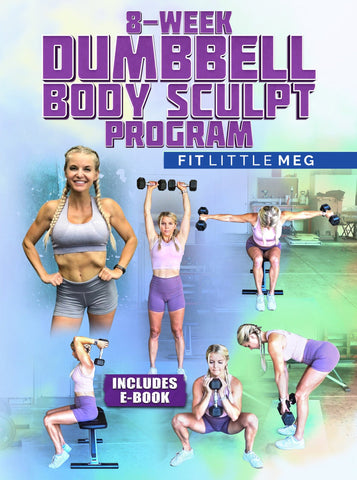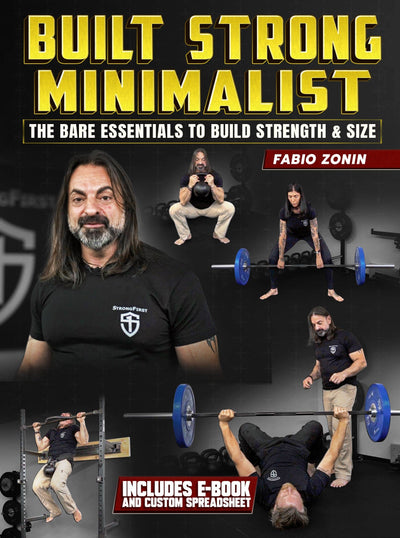Kettlebell vs Dumbell
When it comes to effective and versatile strength training, kettlebells and dumbbells are two popular choices that offer unique benefits. These compact pieces of equipment can be found in gyms, fitness studios, and homes all over the world, enabling individuals to build strength, improve conditioning, and enhance overall fitness. But which one is better suited for your workout routine? In this blog post, we'll delve into the differences between kettlebell vs dumbbell workouts, helping you make an informed decision based on your fitness goals and preferences.
What this article covers:
The Kettlebell Advantage
Kettlebells have gained significant popularity in recent years due to their dynamic and functional nature. These cannonball-shaped weights with a handle offer a wide range of exercises that engage multiple muscle groups simultaneously. Here are some advantages of incorporating kettlebells into your workout routine:
Full-Body Engagement: Kettlebell exercises often involve swinging and dynamic movements that challenge not only individual muscles but also your core and stabilizing muscles. This full-body engagement can lead to improved overall strength and functional fitness.
Cardiovascular Benefits: Kettlebell workouts are known for their ability to blend strength training with cardiovascular conditioning. Moves like kettlebell swings and snatches elevate your heart rate, helping you burn calories and improve endurance.
Enhanced Grip Strength: The design of kettlebells with their thick handle places extra demand on your grip strength. Regular kettlebell training can lead to improved grip strength, which is beneficial for daily tasks and other forms of exercise.
Range of Motion: Many kettlebell exercises involve swinging or ballistic movements that encourage a wider range of motion. This can contribute to increased flexibility and mobility over time. A great example of range of motion can be observed with the kettlebell swing vs deadlift.
The Dumbbell Advantage
Dumbbells, on the other hand, are the classic choice for strength training and have been a staple in fitness routines for decades. They offer their own set of advantages that cater to various fitness goals:
Isolation and Control: Dumbbells allow for more isolated movements, making them ideal for targeting specific muscles. This precision can be especially beneficial for muscle growth, rehabilitation, and developing muscular imbalances.
Variability: Dumbbells come in various shapes, sizes, and weight increments, giving you a wide range of options to tailor your workout intensity. This variability is particularly useful when progressing through different levels of resistance.
Stability and Control: Since dumbbell exercises often require greater stability and control, they can contribute to improved muscle activation and coordination. This can lead to better muscle balance and joint health.
Transition to Free Weights: If you're new to strength training, dumbbells might be a better starting point. They offer a more straightforward way to learn and execute exercises without the complexity of swinging movements that kettlebells involve.
Choosing the Right Fit
Ultimately, the choice between kettlebell and dumbbell workouts depends on your fitness goals, experience level, and personal preferences. If you're looking for a dynamic, full-body workout with an emphasis on functional strength and conditioning, kettlebells might be your best bet. On the other hand, if you're interested in precise muscle targeting, progressive overload, and greater control, dumbbells could be the way to go.
It's worth noting that combining both kettlebell and dumbbell exercises can create a well-rounded training routine. For example, you can focus on kettlebell swings for explosive power and cardiovascular benefits while using dumbbells for exercises like bicep curls and lateral raises.
In the kettlebell vs. dumbbell debate, there's no definitive winner – both types of equipment have their unique advantages that can contribute to a successful fitness journey. The key is to align your choice with your specific goals and preferences. Whether you opt for the dynamic versatility of kettlebells or the targeted control of dumbbells, incorporating strength training into your routine is a step towards building a healthier, stronger, and more resilient body.
Did you find the blog helpful? If so, consider checking out other guides:
- Kettlebell Bicep Workout
- Kettlebell Curls
- Kettlebell Hammer Curl
- Kettlebell Crush Curl
- Kettlebell Towel Curl
- 15 Minute Kettlebell Workout
- 5 Minute Kettlebell Workout
- Landmine Kettlebell Press
- Kettlebell Standing Chest Press
- Kettlebell Strict Press
- Military Press Kettlebell
- Upside Down Kettlebell Press
- Kettlebell Bench Press
- Kettlebell Floor Press
- Bent Press Kettlebell





